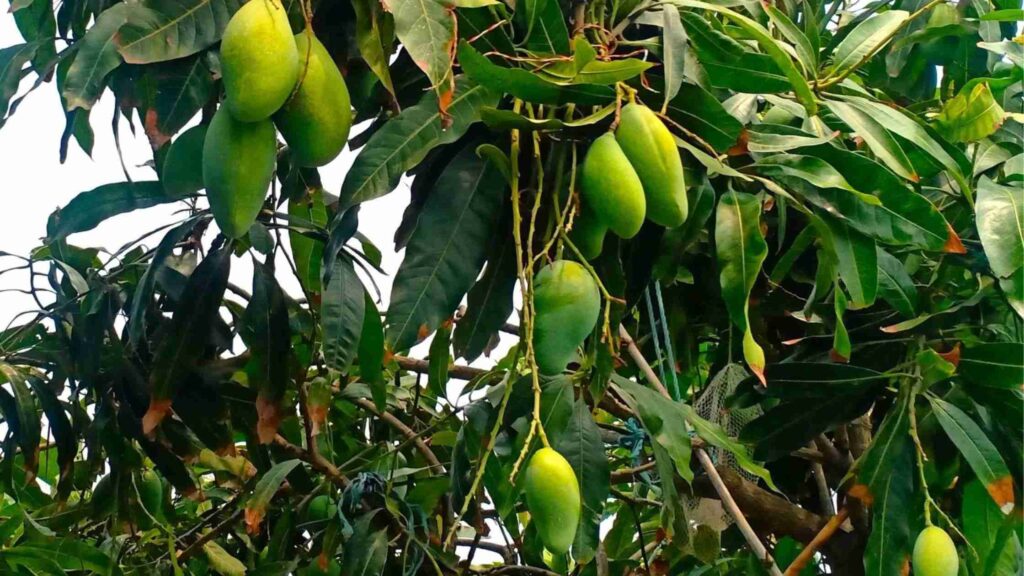In this context, I will explain how to grow capsicum from seed in a roof garden bought from the local agriculture store.
Duration of Planting
Like the tree, the seeds also have dormancy. It takes a long time to germinate and is extra cold. Many times, the seeds are spoiled after sowing. If you want to transplant from seeds, it is better to sow in the early winter or spring season.
Sowing Seeds

You can buy some varieties of Capsicum seedlings from local agriculture Stores or online stores. When buying seeds always buy from a good and reliable agriculture Store. Seedlings can be made from seeds there easily but if you collect capsicum bought from the local market and plant the seedlings, the quality of the food will not be good. It will be better to take some ripe capsicum to have vegetables. Ripe Capsicum vegetables contain mature seeds which gives better results. I have bought seeds from a local agriculture store.
Container Selection
I have taken a container and made the holes in the bottom of the container which help to drain out excess water as plants tend to rot in water-logged conditions. I Always place small stones or gravel over the drainage hole as it will help to prevent the potting soil mix from washing out of the hole when water. It will only allow the access water to drain out.
Germination Seeds
I have let the seeds soak overnight before sowing. Before sowing seeds, I prepared the potting mix, for the potting mix I took 50% normal garden soil, 30% organic compost 20% river sand, and 1 tablespoon of fungicide as Trichoderma.
I have placed the seed in the new potting mix and Kept the pot in partial shade. Germination occurred 4 to 5 days after sowing. When the capsicum seedlings were 15 to 16 days old I placed them in a 3 to 4-inch clay tub. I have Kept the Potting mix moist but not soggy. After 15 days seedlings come out with 4-5 leaves. After 30 days, capsicum seedlings have been grown up to 7-8 inches with 8-9 leaves.
Watering and Sunlight Location
I have kept the new pot in a place with low levels of sunlight for a few days. It was taken 2 days for the plant to adjust to its new soil environment and then brought back into a full sunlight environment.
Transplanting and Soiling the Plant

After 30 days, I have transplanted them into an individual pot. It is better to plant one seedling in a 10 to 12-inch clay tub during the final potting. I have taken a well-draining pot with drainage at the bottom covered the hole with stone and given with potting mix. Made a hole in the center gently took out a plant from the pot without disturbing the routing system and placed it in the transplanted potted hole. Watered in thoroughly.
Before transplanting the plant, I had to prepare a potting mix, taking 40% normal Garden soil, 20% organic compost, 20% river sand, and 20% Cocopeat with 100 grams of bone meal. A small amount of fungicide has been mixed which is 1 tablespoon Trichoderma. After doing roof gardening, Cocopeat has been playing great importance when making soil. Cocopeat makes the soil crumble. Excess water does not stick to the soil. From this mixing soil, the plant will take its necessary nutrients and grow roots and branches.
Fertilizing the Plant
Continue feeding my capsicum plants with organic compost, vermicompost, leaf compost, or decomposed cow dung every 14 to 15 days. Used organic manure wherever possible rather than synthetic fertilizers. Verified that the soil was still moist but not drenched. Given the plant’s space between watering for optimal results, and only watered them when the soil starts to dry up.
Pinching Point
After the seedlings reached a length of 7 to 8 inches, pinched off the top portion. This action stimulated the plant to branch out, resulting in more chili production. Pinching stops the upward growth of the plant and encourages the formation of multiple branches directly below the point where the top was removed—no need to do 3g or 4g cutting.
Diseases and Pests Management
The most frequent pests to affect capsicum are spider mites, whiteflies, and aphids. The plant is frequently afflicted with the leaf curl virus. We should trim the stalks if the leaf curl virus is present. To prevent the illness from spreading to other plants in the roof garden, if the attack is serious, the plant should be approved and removed.
When it comes to control these pests, it’s advisable to regularly spray Capsicum plants starting from the seeding stage with a solution of 5 ml of neem oil mixed with 1 liter of water every 15 days. To prevent whiteflies in the early stages, apply the neem oil solution to affected plants. Fruit flies can damage young fruits by laying their eggs inside of them and producing larvae that contaminate the fruit from the inside out. Made tiny holes in polybags and covered the fruits with cotton bags to keep them safe. Furthermore, fruit flies can be kept away from capsicum plants by using pheromone traps.
Capsicum Cultivation Plant

After 1 to 2 months of planting, the capsicum plant starts flowering. When it starts to bear fruit, it continues its fruit for 2 to 3 months. When the fruits are fully grown, they should be picked up so that the smaller fruits may grow larger.
Capsicum contains a lot of vitamins A and C. The amount of vitamin C in red capsicum is double that of green. Capsicum also contains protein, carbohydrates, and other vitamins Folic acid, Iron, Potassium, Phosphorus, Copper Zinc, etc. Besides, Capsicum can prevent cancer and control high blood pressure by increasing eyesight.



